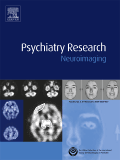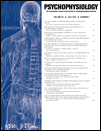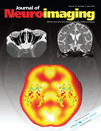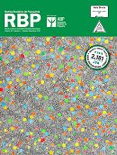
PSYCHIATRY RESEARCH-NEUROIMAGING
Scope & Guideline
Enhancing Understanding of Mental Health Through Advanced Imaging Techniques
Introduction
Aims and Scopes
- Neuroimaging in Psychiatric Disorders:
The journal publishes studies utilizing various neuroimaging modalities, including fMRI, PET, DTI, and EEG, to investigate the neural correlates of psychiatric disorders such as schizophrenia, depression, and anxiety. - Impact of Treatments on Brain Function:
Research often focuses on how different psychiatric treatments, including pharmacological, psychotherapeutic, and neuromodulatory approaches, influence brain structure and connectivity, providing insights into treatment efficacy. - Transdiagnostic Approaches:
The journal emphasizes transdiagnostic research that explores shared neurobiological mechanisms across different psychiatric conditions, promoting a broader understanding of mental health. - Innovative Methodologies:
It encourages the use of novel methodologies, including machine learning and advanced statistical analyses, to improve diagnostic accuracy and predict treatment outcomes in psychiatric populations. - Developmental and Lifespan Perspectives:
The scope includes studies examining neurodevelopmental aspects of psychiatric disorders, considering how brain changes occur over the lifespan and their implications for treatment and intervention.
Trending and Emerging
- Machine Learning Applications:
There is a growing trend towards applying machine learning techniques to analyze neuroimaging data, enabling more sophisticated models for predicting treatment outcomes and classifying psychiatric disorders. - Neuroinflammation and Mental Health:
Research exploring the role of neuroinflammation in psychiatric conditions is on the rise, emphasizing the need to understand how inflammatory processes influence brain function and behavior. - Personalized Medicine Approaches:
The journal is increasingly featuring studies that advocate for personalized medicine in psychiatry, utilizing neuroimaging to tailor treatments based on individual brain profiles and responses. - Integration of Multi-Modality Imaging:
There is a notable increase in studies that integrate multiple neuroimaging modalities (e.g., combining fMRI with EEG or PET) to provide a more comprehensive understanding of brain function in psychiatric disorders. - Neural Correlates of Comorbid Conditions:
Emerging research is focusing on the neural correlates of comorbid psychiatric conditions, exploring how overlapping symptoms and brain mechanisms can inform better treatment strategies.
Declining or Waning
- Focus on Traditional Neuroimaging Techniques:
There has been a noticeable shift away from reliance solely on traditional neuroimaging methods like structural MRI, with more emphasis now placed on dynamic and functional imaging techniques that capture real-time brain activity. - Single Disorder Studies:
Research focusing exclusively on single psychiatric disorders is becoming less common, as the journal increasingly prioritizes studies that adopt a transdiagnostic or integrative approach. - Basic Neuroscience Research:
There is a gradual decline in papers centered on basic neuroscience mechanisms without direct clinical implications, as the journal is leaning towards studies that offer practical insights into treatment and intervention. - Longitudinal Studies:
While longitudinal studies are crucial for understanding the progression of mental disorders, there seems to be a decrease in such publications, possibly due to the complexity and resource demands associated with long-term research. - Psychopharmacological Studies without Imaging:
Research that investigates psychopharmacological effects without accompanying neuroimaging data is becoming less frequent, as the journal increasingly emphasizes the integration of treatment effects with neuroimaging outcomes.
Similar Journals

Alpha Psychiatry
Fostering Interdisciplinary Dialogue in the Field of Psychiatry.Alpha Psychiatry, published by AVES, stands at the forefront of mental health research and psychiatric advancements. With a commitment to disseminating high-quality and impactful studies, this journal serves as a critical platform for scholars, clinicians, and students interested in exploring the complexities of psychiatric disorders and treatment methodologies. Although the impact factor and specific scope details are still evolving, Alpha Psychiatry is dedicated to fostering interdisciplinary dialogue and promoting innovative research that tackles contemporary challenges in the field of psychiatry. As an open-access journal, it ensures that research is widely accessible, enhancing knowledge transfer and collaboration within the global scientific community. Located in Istanbul, Turkiye, the journal proudly represents a rich academic tradition, aiming to contribute significantly to the global discourse on mental health.

Noropsikiyatri Arsivi-Archives of Neuropsychiatry
Pioneering Research for a Healthier MindNoropsikiyatri Arsivi-Archives of Neuropsychiatry is a prominent scholarly journal dedicated to advancing knowledge in the fields of neuropsychiatry and mental health. Published by the Turkish Neuropsychiatry Association, this journal aims to disseminate high-quality research that contributes to a deeper understanding of psychiatric disorders, innovative treatment modalities, and interdisciplinary approaches in neuroscience. Based in Turkey, the journal has been in circulation since its inception, with a rich history reflecting its commitment to addressing contemporary issues in mental health care. It is currently indexed under Scopus, with notable rankings in both Psychiatry and Mental Health (Rank #378/567, 33rd Percentile) and General Neuroscience (Rank #97/113, 14th Percentile), highlighting its increasing relevance and impact in the academia. Although it is not currently an open access journal, its contributions remain vital for researchers, professionals, and students who wish to stay abreast of the latest developments and research in neuropsychiatry.

PSYCHOPHYSIOLOGY
Pioneering Discoveries in Psychophysiology.PSYCHOPHYSIOLOGY, published by WILEY, stands as a leading journal in the intersection of psychology and physiology, contributing significantly to our understanding of the brain and body connection since its inception in 1964. With an impressive scope covering areas such as biological psychiatry, cognitive neuroscience, and neuropsychology among others, the journal has earned multiple Q1 rankings in these critical domains as of 2023, reflecting its high impact in the field. The journal ranks particularly well in categories such as Experimental and Cognitive Psychology and neurology, indicating its status as a pivotal resource for professionals and researchers committed to advancing knowledge in psychophysiological studies. Furthermore, with an e-ISSN of 1469-8986, PSYCHOPHYSIOLOGY is accessible to a global audience, although it is not part of the Open Access movement, ensuring that its rigorous research remains a trusted source for academic excellence. By engaging with this journal, readers can expect to discover pioneering research and significant findings that push the boundaries of current understanding, making it an essential publication for those invested in the advancements of psychological and physiological sciences.

JOURNAL OF NEUROIMAGING
Unveiling the Complexity of the Human BrainJOURNAL OF NEUROIMAGING, published by Wiley, serves as a premier platform for advancing knowledge in the fields of neurology, radiology, and clinical imaging. With its ISSN 1051-2284 and E-ISSN 1552-6569, the journal spans influential research dating from 1991 to 2024, making it an essential resource for professionals and researchers engaged in neuroimaging. It holds a commendable position in Quartiles—ranking Q2 in both Medicine (miscellaneous) and Neurology (clinical), and Q1 in Radiology, Nuclear Medicine, and Imaging as of 2023. The journal's standing in the Scopus rankings, particularly its percentile ranks of 68th and 60th in their respective categories, underscores its impact within the academic community. Although it does not offer open access, it remains pivotal for disseminating high-quality, peer-reviewed research that enriches the understanding of neuroimaging techniques and their clinical applications. The JOURNAL OF NEUROIMAGING is an invaluable resource for scholars seeking to contribute to the evolving landscape of medical imaging and neurodiagnosis.

Brain Imaging and Behavior
Illuminating Connections: Unraveling Brain and BehaviorBrain Imaging and Behavior is a premier journal published by SPRINGER, dedicated to advancing the understanding of the relationship between brain function and behavior through innovative imaging techniques. Since its inception in 2007, the journal has provided a crucial platform for researchers and professionals in fields such as Behavioral Neuroscience, Cognitive Neuroscience, and Psychiatry and Mental Health. With an impressive ranking within the Q1 category in Radiology, Nuclear Medicine and Imaging and maintaining strong Q2 status in several other categories, the journal is positioned as a leading resource for groundbreaking research. The journal aims to disseminate high-quality studies that explore neurobiological underpinnings of behavior, utilizing cutting-edge imaging technologies. Although it is not an open-access journal, the visibility and impact of published works in Brain Imaging and Behavior continue to influence the scientific community significantly, underscoring the critical intersection between imaging science and neuroscience.

Brazilian Journal of Psychiatry
Bridging the gap between research and clinical practice.The Brazilian Journal of Psychiatry is a prominent peer-reviewed journal dedicated to advancing the field of psychiatry and mental health, published by the Associação Brasileira de Psiquiatria. With an impressive Q2 ranking in the Psychiatry and Mental Health category for 2023 and a Scopus rank of #130 out of 567, this journal serves as a vital resource for researchers, clinicians, and students alike. Since its transition to Open Access in 1999, it has aimed to disseminate high-quality research, innovative practices, and critical insights relevant to mental health in Brazil and beyond. The journal's focus spans various topics in psychiatry, aiming to bridge the gap between research and clinical application, making it essential reading for professionals and academicians committed to improving mental health outcomes. With a commitment to fostering scholarly discourse, the Brazilian Journal of Psychiatry not only enriches the academic landscape but also enhances the practice of psychiatry through its widespread accessibility and dedication to excellence in research.

NEUROIMAGE
Exploring Cognitive Landscapes through Advanced ImagingNEUROIMAGE, published by Academic Press Inc Elsevier Science, is a leading international journal dedicated to advancing the fields of cognitive neuroscience and neurology. With an impressive impact factor that places it in the Q1 category for both disciplines, NEUROIMAGE stands at the forefront of disseminating high-quality research that employs advanced imaging methods to elucidate the workings of the human brain. As a pivotal platform since its inception in 1992, this journal has continued to thrive, embracing Open Access publishing since 2020 to ensure wider dissemination and accessibility of cutting-edge findings. With a Scopus rank of 7th in cognitive neuroscience and 13th in neurology, and situated in the 94th and 93rd percentiles respectively, NEUROIMAGE serves as an invaluable resource for researchers, professionals, and students alike seeking to explore the intricate relationships between brain structure and function. For more information, please visit their office at 525 B ST, STE 1900, SAN DIEGO, CA 92101-4495.

TRENDS IN NEUROSCIENCES
Advancing Knowledge in Neural ProcessesTRENDS IN NEUROSCIENCES, published by CELL PRESS, is a leading journal in the field of neuroscience, offering cutting-edge insights and important developments in the rapidly evolving landscape of brain research. With an impressive Impact Factor and ranking in the top quartile (Q1) of the category for Neuroscience (miscellaneous), it is positioned as a vital resource for researchers and professionals seeking to stay abreast of the latest discoveries and trends from 1978 to the present. Specifically ranked #3 out of 113 in General Neuroscience by Scopus, this journal promotes the interdisciplinary exchange of ideas and knowledge, making it an essential platform for students and experienced scholars alike. Although it is not an Open Access journal, its value lies in its rigorous peer-review process and commitment to maintaining the highest standards of academic integrity. By continuing to explore the complexities of neural processes and behavior, TRENDS IN NEUROSCIENCES plays a crucial role in shaping the future of neuroscience research and education.

Biological Psychiatry-Cognitive Neuroscience and Neuroimaging
Decoding Mental Health: Where Science Meets InsightBiological Psychiatry-Cognitive Neuroscience and Neuroimaging is a leading interdisciplinary journal published by Elsevier, focusing on the convergence of biological psychiatry, cognitive neuroscience, and advanced neuroimaging techniques. With its prestigious Q1 rankings across essential categories such as Biological Psychiatry, Cognitive Neuroscience, and Neurology (clinical), this journal is at the forefront of research that examines the complexities of mental health through innovative methodologies. Covering a broad spectrum of topics from neurobiological mechanisms to clinical applications, it aims to provide a platform for scholars and practitioners to exchange insights on mental disorders and their neurobiological underpinnings. The impact factor and Scopus rankings further underscore its importance, with rankings highlighting its position in the top percentiles of related disciplines. By fostering an open exchange of ideas and promoting cutting-edge research, this journal is an essential resource for researchers, professionals, and students dedicated to advancements in the understanding and treatment of psychiatric and neurological conditions.

Brain Connectivity
Bridging Research and Understanding in Neuroscience.Brain Connectivity is a premier journal dedicated to advancing the understanding of neural connections and brain function through innovative research and interdisciplinary collaboration. Published by MARY ANN LIEBERT, INC, this journal has established itself in the field of neuroscience, earning a respectable Q2 ranking in the 2023 category of Neuroscience (Miscellaneous) and a Scopus rank of 61 out of 113 in General Neuroscience. Since its inception in 2011, Brain Connectivity has been at the forefront of research on the intricate web of brain networks, exploring topics such as functional connectivity, neuroimaging, and the implications of connectivity studies for understanding various neurological disorders. Researchers, professionals, and students benefit from comprehensive access to cutting-edge studies and critical reviews, fostering a deeper appreciation of brain dynamics. As the field evolves, Brain Connectivity remains a vital resource for those aiming to contribute to our growing understanding of brain architecture and function.